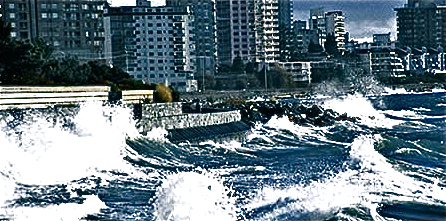
Ellen Woodsworth’s motion at Council
With the recent earthquakes in Japan and New Zealand the need for a more comprehensive and extensive emergency preparedness plan to respond to natural disasters is very apparent.
While there are agencies such as the City of Vancouver’s Neighbourhood Emergency Preparedness Program (NEPP)that are mandated to develop plans with professional disaster response teams and communicate these plans to various communities in Vancouver, a lack of knowledge remains about what the “plan” is when an earthquake does happen.
The West End Residents Association (WERA) was fortunate to have a community member, Randy Helten spearhead a project to increase the community awareness around emergency preparedness by being the community conduit and organizer for a number of workshops in the community centres and neighbourhood houses. Mr. Helten set up an “emergency preparedness” page on the WERA website to promote upcoming workshops and to communicate information about what one needs to know when the big one hits.
Mr. Helten’s efforts were a huge success by increasing attendance at NEPP workshops. With simple tools of postering in the community, posting information on a website and a little bit of earned mediaWestender Story, the community knowledge about responding to earthquakes was greatly increase.
I never went to one of these workshops before Mr. Helten took on the project of being a community advocate for earthquake response, but as a result of his efforts I did finally attend one. My takes-aways from the workshop were:
1. Protect your head.
2. Have enough water and food to last 48 hours without assistance.
3. Have cash on hand, the bank machines are not going to work.
4. Have a radio.
5. Have flashlight, matches and candles
This is all I can remember from the workshop.
Through talking with friends I realized that there is a general lack of knowledge about what folks should do and where to go when there is an earthquake. People are simply unaware of what the community plan is, unlike the citizens of Japan. To me this speaks to a need for more planning at the community level.
At the April 4 Vancouver Park Board meeting COPE Commissioner Woodcock is moving a motion to address the lack of knowledge at the community level in regards to an emergency response. Commissioner Woodcock is just back from New Zealand where she had the unique opportunity to experience an earthquake. Ms. Woodcock knows first-hand how communities respond in an earthquake. This personal experience in New Zealand has led to the motion to resource more planning at the community centres in order to develop a community plan and more effectively communicate it to residents.
The motion:
Whereas Japan is a leader in having organized its citizenry in earthquake preparedness, and Christchurch has organized a Civil Defence Emergency Management plan involving a series of partnerships between City Council, emergency services, community agencies and neighbourhood volunteers for effective emergency response and relief, and were immediately deployed after the February 22, 2011 earthquake, and
Whereas Vancouver’s Neighbourhood Emergency Preparedness Program (NEPP) delivers sessions on Family Emergency Preparedness through community centres; while at the same time there is no coordinated Response measures in effect
Whereas Vancouver actively supports volunteers in Emergency Social Services and Amateur Radio through the Office of Emergency Management and the Police Department, however does not have programs in place to engage women’s and disability organizations to address more specific family needs
Whereas there is no single program that consolidates neighbourhood emergency Preparedness with Response teams through the Office of Emergency Management, the Police Department and Community Centres across the City
Be it resolved that in order to provide the most effective earthquake crisis relief, the Park Board work with the City to expand Emergency Preparedness and Response services at community centres, which includes providing tools, training, and support to a network of neighbourhood volunteers.





